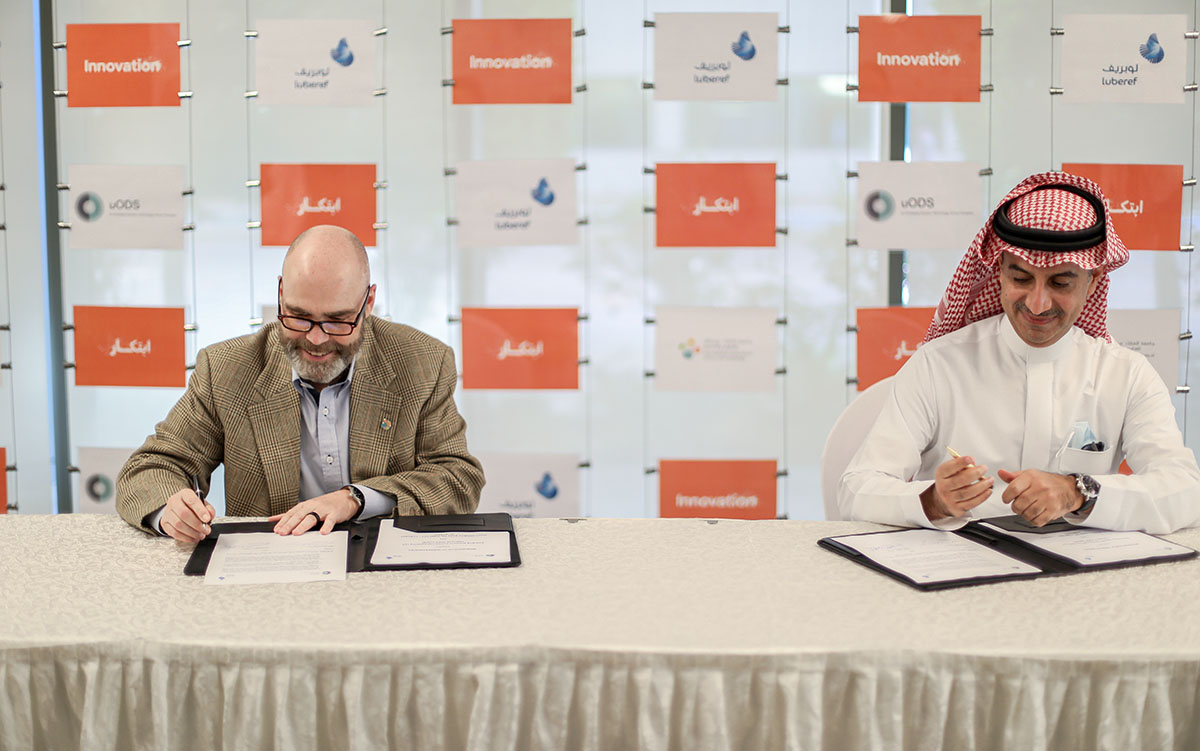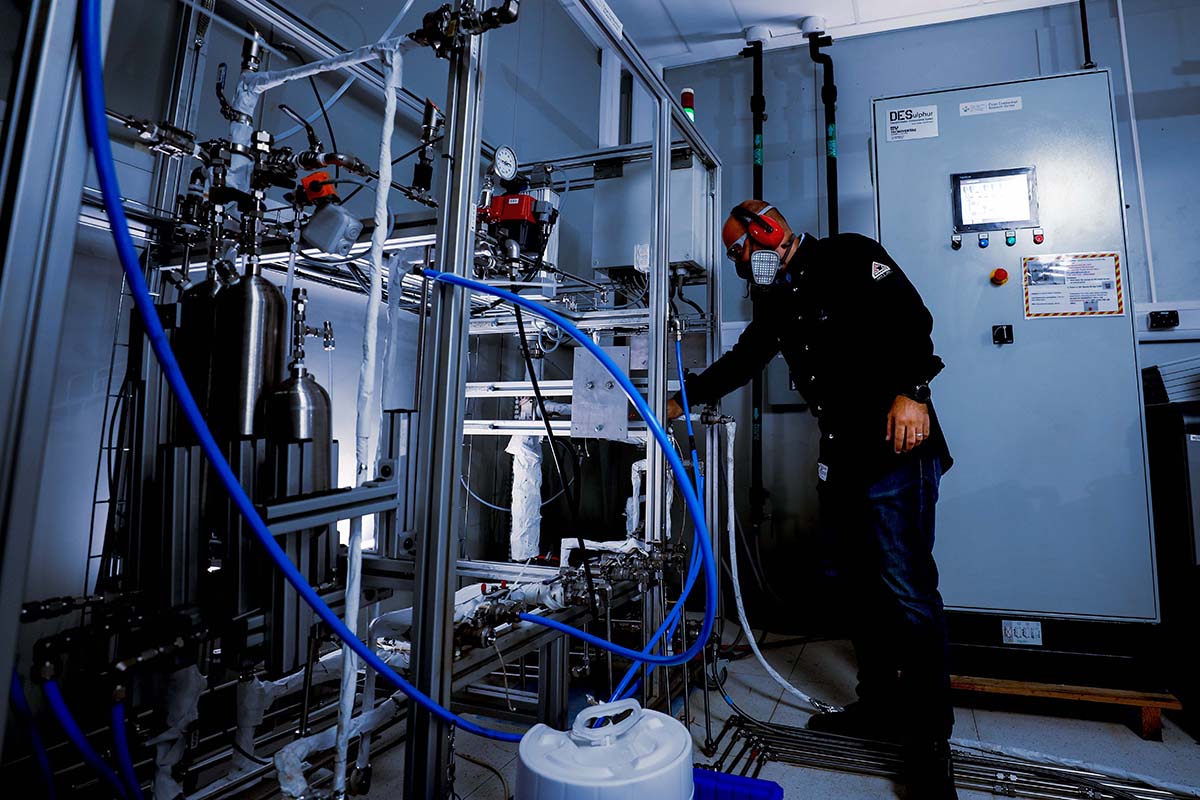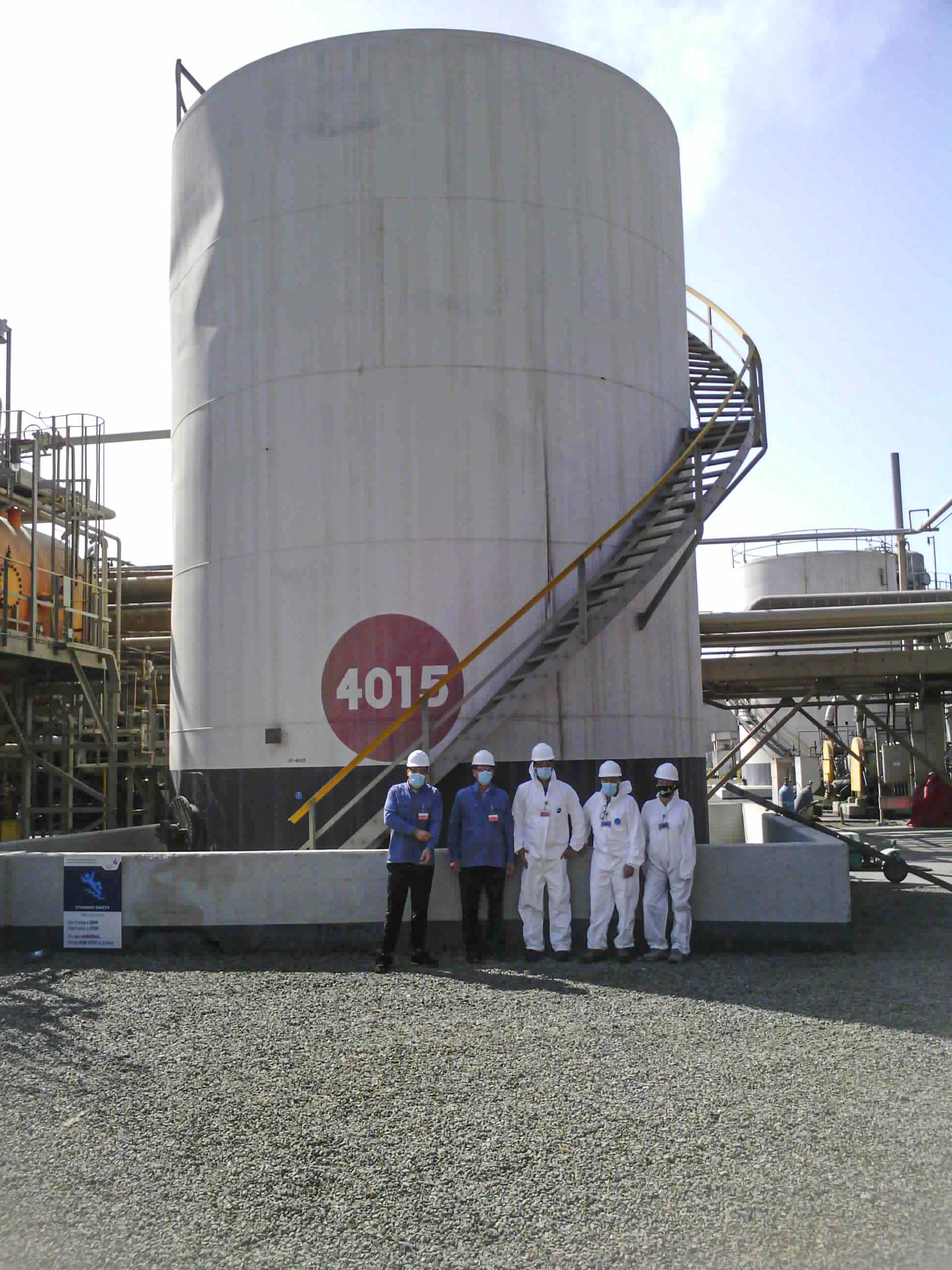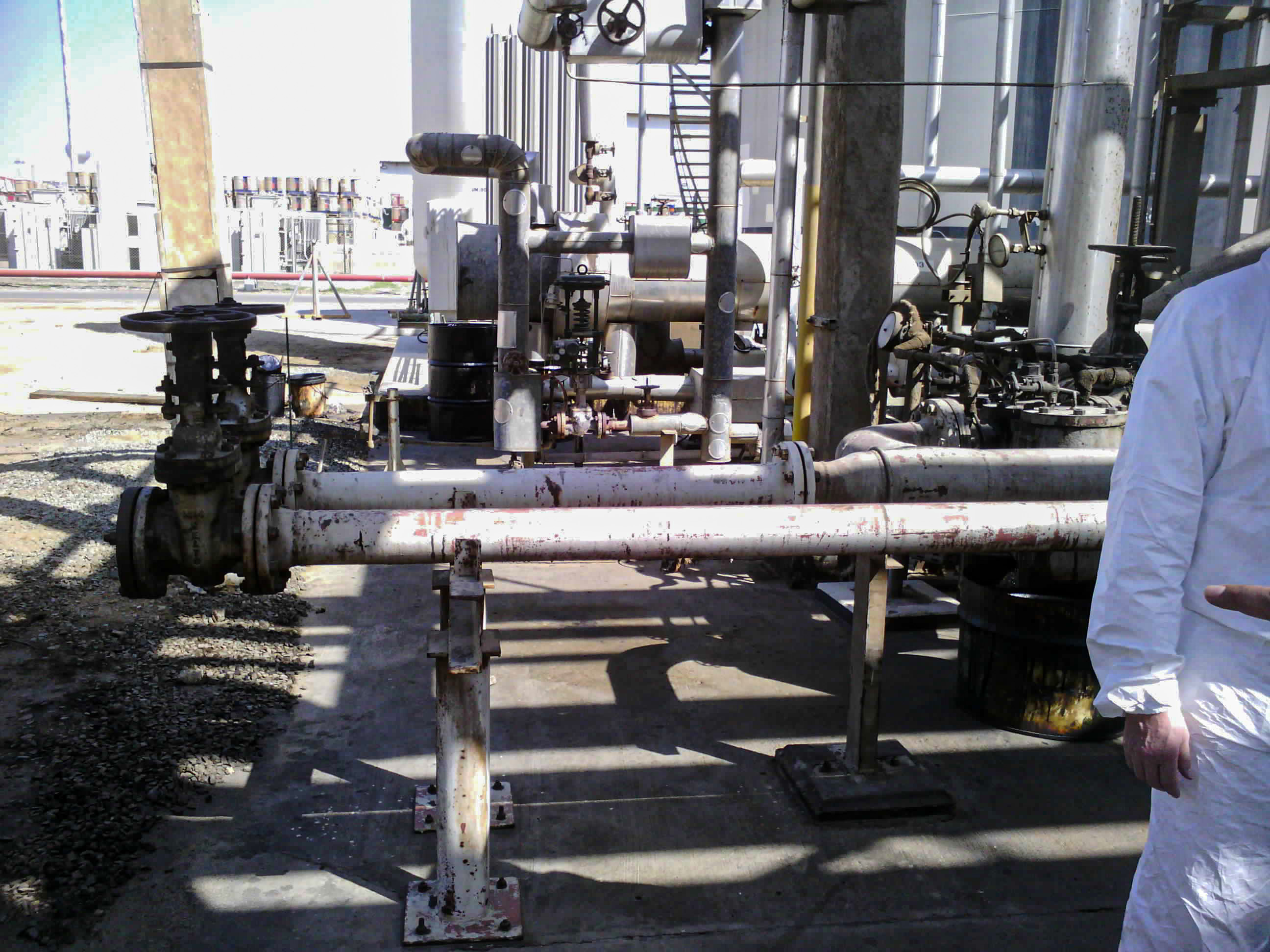MOU between KAUST startup and Luberef sets path for cleaner air

Mr Tareq Alnuaim (right) President and CEO of Luberef and Prof. William Roberts – President of uODS signing the MoU.
A startup in the KAUST Clean Combustion Research Center (CCRC) is being lifted to new heights through its partnership with Saudi Aramco Base Oil Company – Luberef. Emerging Solutions Commercial Company LLC, trading as uODS, is a company formed to commercialize KAUST intellectual property to remove harmful sulfur from hydrocarbons. A Memorandum of Understanding (MoU) was signed on January 19, 2022, with Luberef agreeing to support uODS in developing and deploying their technology.
"This spin out and the resulting MoU with Luberef is a great example of translating the fundamental research done in our labs, with a team of international collaborators, into a scalable and economically viable process to meet a critical real-world need," stated William Roberts, Director of Clean Combustion Research Center and President, uODS.
The impetus for the project was born when the Saudi Ministry of Energy approached KAUST to inquire about any ongoing research that could help the Kingdom meet new emission requirements introduced by the International Maritime Organization (IMO) 2020. The aim of the IMO 2020 rules is to establish limits on sulfur content in fuel oil used to power merchant ships. Among the five key benefits of reducing sulfur oxide (SOx) emissions from ships, as highlighted by IMO 2020, are: cleaner air, positive impacts on human health, and the introduction of higher-quality fuels.
Making both environmental and economic sense
The uODS process is built upon basic research in sonochemistry pioneered at the CCRC. The process reduces sulfur in marine fuels, meeting IMO 2020 regulations without the need to consume valuable hydrogen. Additionally, the process can operate at low temperatures and atmospheric pressure.

Lab scale uODS process in KAUST laboratory
The MoU will help Luberef reduce its daily environmental footprint of burning 270 tons of high-sulfur heavy fuel oil at their refineries in Jeddah. The resulting emissions contain large quantities of SOx, which contribute to acid rain, nitrogen oxide (NOx) and exhaust particulate matter (PM).
"We at Luberef believe that this technology has the potential to become pivotal in developing a more sustainable future for the oil industry, and the fact that it is being developed at KAUST gives us pride to be the first site to pilot the technology," stated Tareq AlNuaim, President and CEO of Luberef.

The Luberef team in front of the fuel tank which will be filled with very low sulfur fuel oil produced by the uODS Process
The KAUST startup will install their own rig on-site and start by test producing 10 tons per day of defulfurized fuel as part of the agreement. "They'll run it through their boilers, and we'll be able to measure emissions after stack, showing a reduction of harmful emissions by a factor of seven or more," Roberts said.
The goal is to scale up from there and provide Luberef with the volume of 270 tons they require on a daily basis.
"Demonstrating the uODS technology at scale will be a major milestone achievement for the Kingdom's efforts to drive the industry to achieve environmental excellence, and ensure that oil has a more sustainable future," said Mark Brown, CEO, uODS.
There's also a strong business case for Luberef to partner with uODS to make their process more sustainable. The Aramco subsidiary produces a wide range of base oils used for lubricants. By removing the sulfur content, they can increase the value of their products.
The science behind the process
Getting rid of sulfur can be done in either two ways: by taking it out of the fuel or removing it from the exhaust. It's a much more cost-effective and scalable method to extract from the fuel.
Typically, light hydrocarbons are defulfurized with hydrogen, so they drive the sulfur off as H2S (hydrogen sulfide). But these are very large, high molecular weight molecules, and the sulfur isn't easily removed with hydrogenation. This is where the uODS process takes over. The technology is ideally suited for things like heavy fuel oils, marine fuels, and base oils, not lighter oils like diesel or jet gasoline.
The process of pulling the sulfur out by breaking the bonds and generating H2S has been around for 70 or 80 years. However, it takes a lot of hydrogen and a very high-pressure and high-temperature environment to make the reaction happen, which is only feasible in a refinery.
The KAUST startup offers a novel solution where this can be achieved at room temperature and room pressure without the need for hydrogen. It means that the process can be achieved outside a refinery, even at a bunkering facility.
The uODS process core is in the ultrasonically-induced cavitation. Sound waves propagate into the liquid, creating microscopic cavitation bubbles that eventually collapse, leading to high mixing and hot spots.
"We realized that fluid dynamics was the key to creating a commercially viable process. Modeling the entire process, from a single bubble to the whole reactor, enabled accurate control over the process and improved yield," added Paolo Guida, Chief Technology Officer, uODS.
Future outlook for renewables and a decarbonized economy
The developing technology needed to remove sulfur from large volumes of heavy oil fuels remains a niche endeavour that mainly serves to curb emissions in the marine transport industry. This singular sector burns tens of millions of tons of fuel oil per year. Roberts said it's not in the realm of possibility to alter the course, as it takes years to design and build ships. Replacing fossil fuels may not be an economically viable option in the short or medium term, but uODS provides a viable transitional technology.

Inlet of heavy fuel oil to Luberef site to be processes to remove sulfur.
"The KAUST Clean Combustion Research Center is focused more on hard-to-decarbonize sectors such as aviation, marine and heavy-duty trucking. The move to electrification or hybridization for light passenger fleets makes sense in densely populated areas of wealthy countries, but not everyone fits that category," Roberts explained. "We're most likely not going to have battery-operated ships, and certainly not airplanes in the near future. We've got trillions of dollars invested in the existing infrastructure."
He added that internal combustion engines, or jet engines, are really good at converting chemical entropy into work and thrust propulsion. "We need to change the fuel and make it more friendly. This means taking what we're burning and consuming now, and then burning it cleaner."
The next step for the future is finding economically efficient ways to convert renewables into fuels that can be adapted into the existing or modified infrastructure.
"Eventually, we'll get to something like hydrogen or ammonia, and move away from hydrocarbons, but that's a natural transition that will take much longer than people want," he said.
Scraping the barrel for future innovations
Peering into the future of maximizing the fruits of similar bridge technologies, the ideal scenario is to take something that's low-value and increase its value by making it more eco-friendly. A good example is the work being done at the Jazan IGCC (Integrated Gasification, Combined Cycle) power plant.
Jazan IGCC, the largest IGCC plant in the world, is focused on taking vacuum residuals — bottom-of-the-barrel, low-value and very heavy materials called petcokes (petroleum coke) that come in solid form like asphalt — and gasifying them, a process that very efficiently produces electricity.
"That's an area that we will be discussing and trying to get some IP (intellectual property). We have a program starting where we're going to build a model gasifier here. It will be a state-of-the-art model facility. I'm hoping that will be one of the methods we'll explore to modify the fuel with our uODS process," said Roberts.

